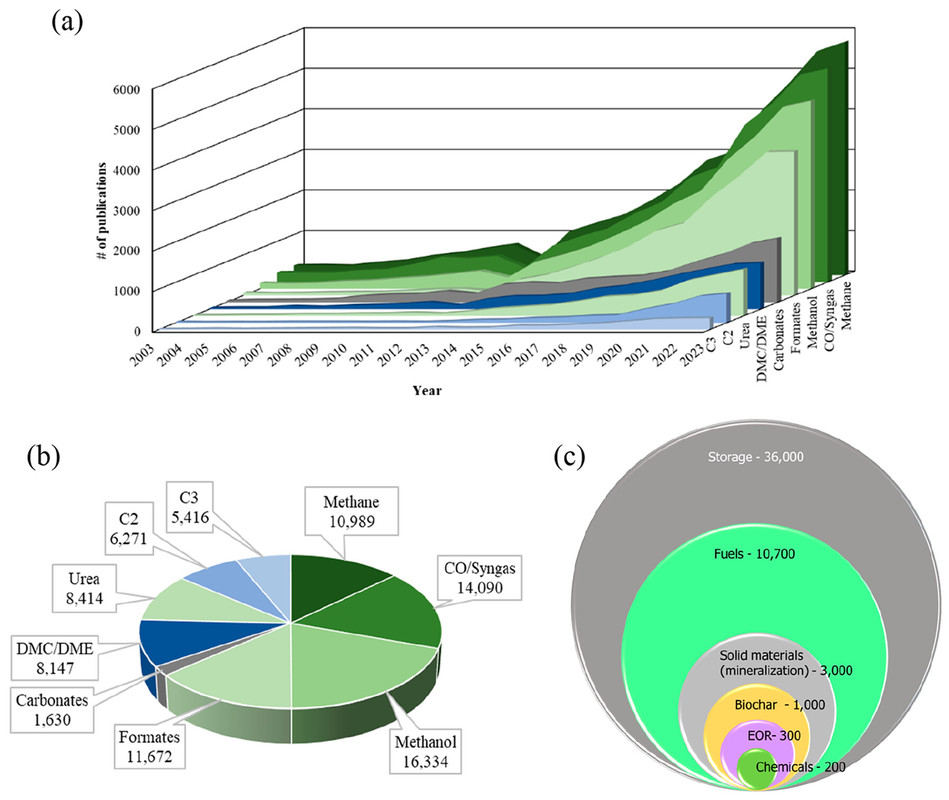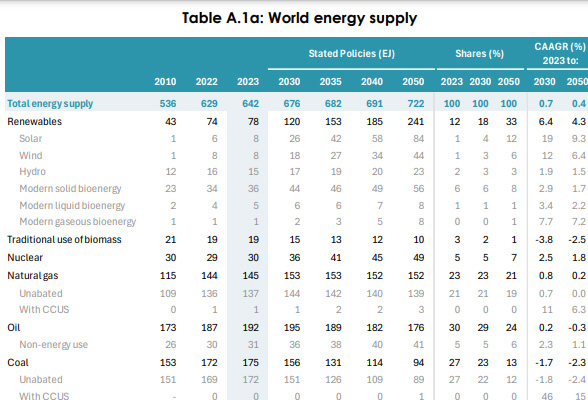Environment & Energy
Related: About this forumA Survey of the Number of Papers Published and Patents Filed on "Sustainable" CO2 Conversion Processes.
The paper to which I will briefly refer is this one, published earlier this year: Perspectives on Advancing Sustainable CO2 Conversion Processes: Trinomial Technology, Environment, and Economy Lourdes F. Vega, Daniel Bahamon, and Ismail I. I. Alkhatib ACS Sustainable Chemistry & Engineering 2024 12 (14), 5357-5382.
To be clear, with some very major caveats, I consider "CCU," Carbon Capture and Utilization, to be potentially a worthy enterprise, but only in the case where the carbon dioxide is removed either directly from the air or (better) via a pathway through seawater, and then only when fossil fuels are banned. This requirement involves a very heavy energy penalty, inasmuch as the laws of thermodynamics dictate that not only must all of the energy that put the CO2 in the first place must be reproduced, but even more energy is required to overcome the entropy of mixing. It is an energetic loser. It is therefore neither simple nor "green" without clean carbon free energy, and no, the tiresome reactionary fantasies about so called "renewable energy" will not cut it despite the text I'll quote below.
Still, CO2 conversion is a "thing," and a lot has been written about it.
That's what's interesting about the paper, is a measure of how much has been written about the topic. So let me jump right to figure 1 in the paper and its caption:

The caption:
One may wonder what the mechanism of "sustainable CO2 conversion" might be. Um...um...um...the usual suspects, I guess.
There's that magical "green hydrogen" again. Unfortunately as I often repeat "green hydrogen" is a Potemkin product dishonestly pushed by fossil fuel companies to rebrand their products as "green." Hydrogen is overwhelmingly made using the steam reforming of dangerous fossil fuels.
I showed a table of how much "green hydrogen" is made in China, which is often marketed by fossil fuel interests as a hydrogen nirvana in spite of the fact that in China, hydrogen is a coal nirvana, or perhaps a coal hell.
Plans for "Green" Hydrogen Transition in China: An Amusing Paper Involving Doubly Wasteful Energy Storage.
Only the values from the entry for 2020 are likely to be based on actual data beyond soothsaying. For convenience, I'll produce them here from table S9:

BG refers to biogas reforming, CG, to coal reforming, SMR, steam methane reforming, natural gas reforming, and EXT refers to industrial byproducts, presumably oil refining. Based on the data for 2020, which is probably the most accurate, in "percent talk" that advocates of so called "renewable energy" like to use to obscure its uselessness, 98.88% of the hydrogen used to power those Chinese devices in the ads posted here was generated by the use of dangerous fossil fuels, accompanied by exergy destruction. Solar energy produced 0.3%, hydro, 0.8%.
If we converted all the bullshit about the existence of "green hydrogen" into hydrogen, it might be clean, but as of now, hydrogen is a dirty fuel.
I am a fan of the wonder fuel DME, dimethyl ether, mentioned in the papers graphic, which can be made in two steps - with some evidence that a "one pot" approach will work under ideal conditions - by hydrogenating CO2, sustainably if, and only if, the hydrogen is made from the thermochemical splitting of H2O using nuclear power sources of heat as primary energy.
This would extend the benefits of nuclear energy - under process intensification procedures - to portable use, and eliminate the need for all fluid fossil fuels.
Regrettably, as things stand now, CO2 conversion, is not a workable solution, because the use of dangerous fossil fuels is increasing, not decreasing.
The 2024 IEA World Energy Outlook has been released; World Energy Demand Grew by 13 Exajoules, Solar and Wind by 2 EJ.

World Energy Outlook 2024
Table A.1a: World energy supply Page 296.
Have a nice day tomorrow.